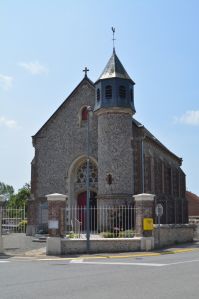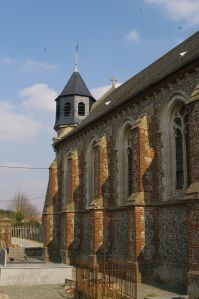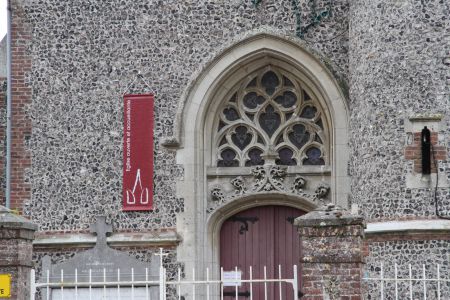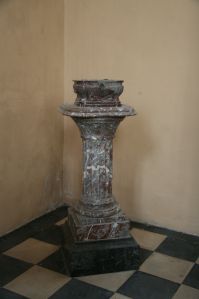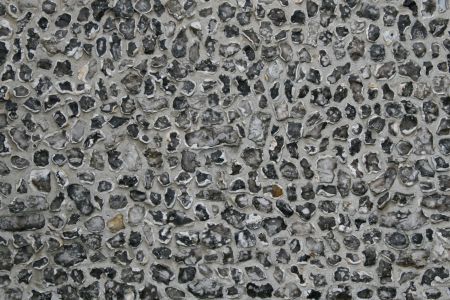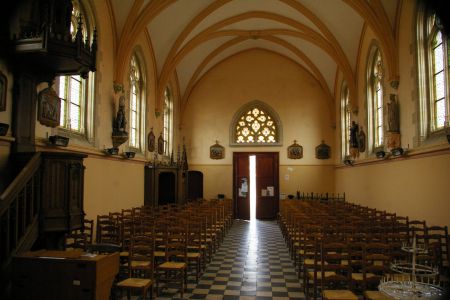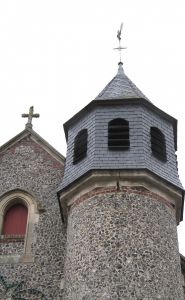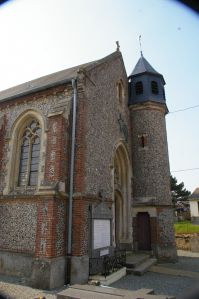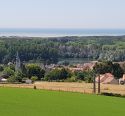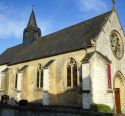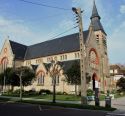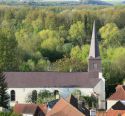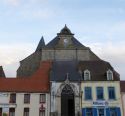Church | XIX | Neogothic | Catholic Church




Map
Opening hours
01 April - 30 September
Mon 13.30 - 18.00
Tue 13.30 - 18.00
Wed 13.30 - 18.00
Thu 13.30 - 18.00
Fri 13.30 - 18.00
Sat 13.30 - 18.00
Sun 13.30 - 18.00
01 October - 31 March
Mon 13.30 - 17.00
Tue 13.30 - 17.00
Wed 13.30 - 17.00
Thu 13.30 - 17.00
Fri 13.30 - 17.00
Sat 13.30 - 17.00
Sun 13.30 - 17.00
Religious offices
Description
Situated on the Opal coast, the village of Lefaux overlooks the Canche bay, and offers a magnificent view of the port and the town of Etaples. The present-day village was founded by the inhabitants of the lost hamlet of Rombly, overwhelmed by sand during the 17th century.
The church of St. John the Baptist, built in the neo-gothic style in 1884 followed the plans of Clovis Normand, a talented regional architect. It draws its charm from its style of construction.
The use of flint for the complete elevation of the walls gives it a very particular aspect. This use is still visible in the garden walls of neighbouring houses and gives particular charm to this coastal village.
The round tower, used as a belfry, and situated against the west front gives the impression that it is a fortified church.
Photos
Remarkable elements
The stained glass windows
The church is embellished with a series of stained glass windows dating from 1892 and dedicated to the life of Saint John the Baptist. One of them bears the coat of arms of the French royal family. It was donated to the church by Joseph of France and his wife Emilie de Rocquigny.
Translated with www.DeepL.com/Translator (free version)
The Way of the Cross
The fourteen stations consist of painted bas-reliefs set in oak frames. A phylactery indicates the name of the station and makes it easier to read.
Translated with www.DeepL.com/Translator (free version)
The holy water font
On either side of the porch, holy water fonts welcome visitors. Very different in style, they are made of blue sandstone and bear a date: one is from 1629, the other from 1885, thus recalling the date of construction of the first church and that of the current building.
Translated with www.DeepL.com/Translator (free version)
Liturgical furnishings
All of the liturgical furnishings are designed in the neo-Gothic style. The high altar, confessional and side altars were created by the Busines workshops, a leading name in sacred art in the 19th century.
Translated with www.DeepL.com/Translator (free version)
The statues
The church in Lefaux has preserved its polychrome statues from the first half of the 20th century. Some of them bear an inscription on their pedestals indicating their origin.
Translated with www.DeepL.com/Translator (free version)
The bell tower
Round bell towers are exceptional for churches, when traces of them remain. They are often encased in a hexagonal tower. The distinctive feature of the bell tower at Lefaux Church is the nature of its construction materials: flint nodules, which make it more difficult to build. This lighthouse-shaped bell tower is in itself a symbol of its function.
Translated with www.DeepL.com/Translator (free version)


